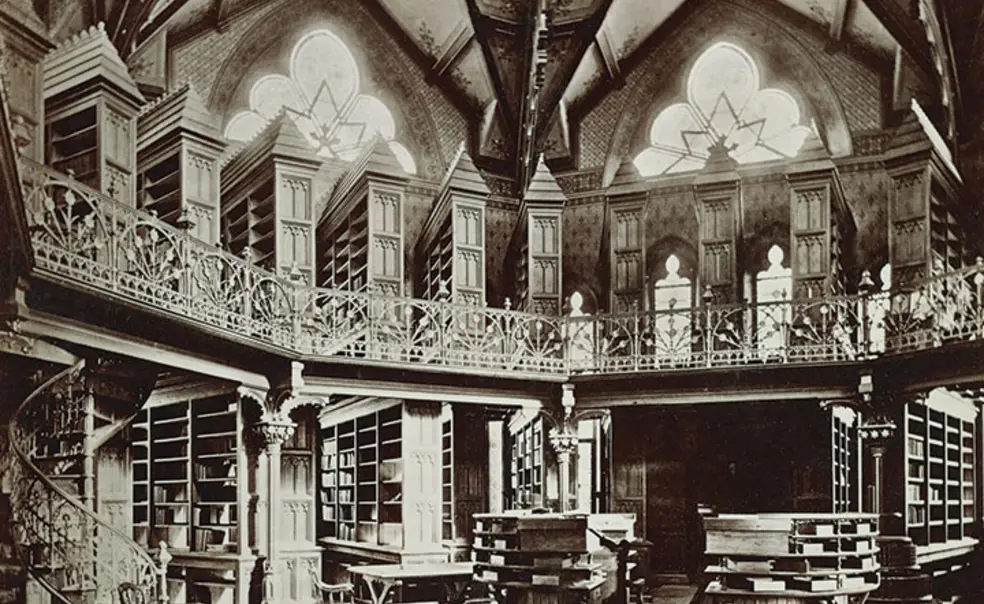The primal tension between old and new roiled Princeton’s library in the fall of 1885. In the eyes of the college’s first full-time librarian, Frederick Vinton, the future of library access lay in catalogues and the “scientific method and system” they embodied; for students, no bibliographic record could replace the act of browsing.
Vinton, whose arrival coincided with the opening of Chancellor Green Library in 1873, created Princeton’s first card catalogue — one that enabled patrons to search for books not simply by author, but by subject. In 1884, when he completed a printed edition of his mammoth subject index, he prefaced its 900 pages by noting: “A student, sitting in his room, with this catalogue before him, may be able to determine what books to borrow, almost as if he were in the alcove where they stand.”
Students begged to differ, especially when Vinton closed these alcoves to them. “No innovation,” the editors of The Princetonian declared, “has ever occasioned more prolonged and heartfelt opposition from the undergraduates of Princeton College than that caused by the erection of the library fence.” In another editorial, they wrote: “He who loves books can no more be satisfied with taking books one by one through the bars from an attendant than could a miser glut his passion for gold in feeling coins singly.”
On Oct. 21, 1885, Vinton and the editors penned dueling columns, the former condemning the “perpetual disorganization of the shelves, produced by so many careless hands taking books down and leaving them in wrong places.” The latter riposted: “The neatness which the Librarian says the present system will produce, is the neatness of disuse. No library so constantly used as ours was can possess it.”
Two years later, Vinton relented sufficiently to issue cards allowing students “within the rail” between 2 and 3 p.m., a small concession but one that acknowledged a place for randomness and serendipity in even the most highly catalogued collection.
John S. Weeren is founding director of Princeton Writes and a former assistant University archivist.












1 Response
Lori McCay Peet
9 Years AgoInteresting post! Curious if...
Interesting post! Curious if the word “serendipity” was used at all in the “duelling columns.”